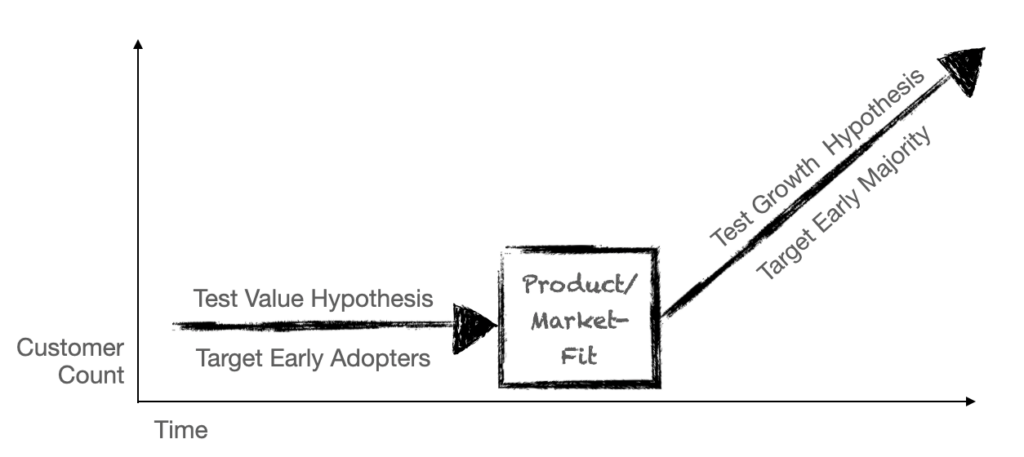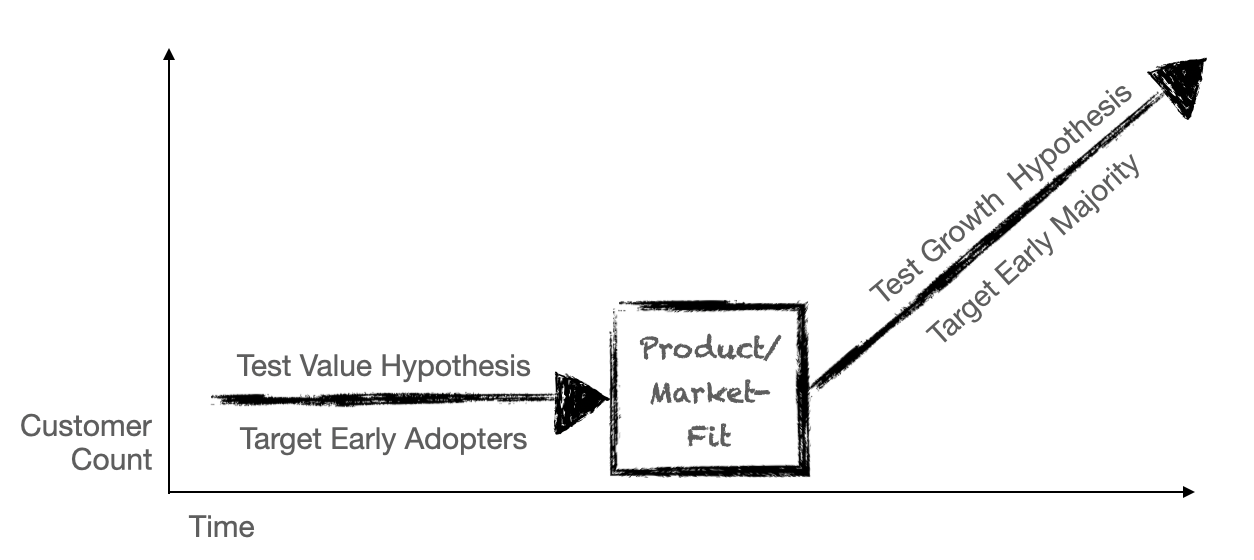Having been around the block a bit, I have discovered a love for the concept of product/market-fit. Now, for a while I have been curious if you actually need a product to achieve product/market-fit.
If you have not been around quite as long as me, or avoid contact with the outside world beyond this newsletter, you may be wondering what Product/Market-Fit (aka Product-Market/Fit, aka product-market fit, aka PMF) is.
So before we get into the question of the article let me first discuss what PMF is.

Product/Market-Fit Defined
Taking a quick jump back in history we find that the term was first coined by Andy Rachleff. Rachleff co-founded Benchmark Capital and later co-founded Wealthfront. Eventually he took the roles of CEO and Executive Chairman there.
Product Market Fit is when you have proven the value hypothesis. What are you going to build? For whom is it relevant? How is the business model [going to work]?
Rachleff takes this definition from Steve Blank’s concept of first validating a value hypothesis, then validating your growth hypothesis. He goes further back and says that the concept originates from Don Valentine, founder of Sequioa Capital, who used say that he wanted to invest in companies that could screw everything up and still succeed because the customer wants their product so badly.
So this is great, it gives some additional context and clarity on the origins of the term. Importantly, it contemplates three key factors to product/market-fit.
- What is the product? (What are you going to build?)
- Who are your customers? (For whom is it relevant?)
- How do can you build a business around it? (How is the business model?)
Moreover, he defines what comes after validating this value hypothesis. Specifically, validating the growth hypothesis comes next.
I takeaway a few key ideas from this.
- PMF is about defining a product AND “desperate” customers
- Do not start growing your business until you have reached PMF
- Before PMF a startup (or new product) should only be focused on validating the value hypothesis or you will never get to growth.
This is already starting to answer my key article question. But before I move on, the biggest question that often gets debated is how to tell when we have reached PMF.
How to Identify when you have reached PMF?
Everyone looks for a simple rule to follow to know when they have achieved PMF. For this, Racleff suggests some simple heuristics.
In consumer products he suggests:
- Exponential organic growth via word of mouth. If you reach this milestone PMF has clearly been obtained.
- Net Promoter Score
For enterprise software, he suggests:
- Sales Learning Yield > 1 (Mark Leslie and Chuck Holloway). Contribution margin / total cost of sales team.
- Remove a product after 30 day POC (Doug Leone). If the customer screams than you have product/market-fit.
Other Thinking around Product/Market-Fit and Tests
Marc Andreessen has written that PMF is “the only thing that matters”. In his article from 2007, Andreessen makes writes about team, product, and market as the important components of a startup. Focusing on team is slightly different than Racleff’s business model. Further, he makes the claim that the most important factor for the business to focus on is the market.
Specifically, if the defined market needs are so great, the first viable product will be readily adopted. Therefore, the product is less important. This is a clear echo of Rachleff’s quote from Don Valentine.
Taken to an extreme, this means that a great market can overcome both a weak product and poor team. The inverse is also true, a great team and product will go nowhere if a great market opportunity is not present.
And neither a stellar team nor a fantastic product will redeem a bad market.
Racleff takes this a step further and says that a pivot, using the Lean Startup terminology, should only be around finding the right market. If you need to redo a product or team, you are effectively doing a restart not a pivot.
There are a number of other definitions on PMF out there, one of the most referenced is used by Superhuman according to Rahul Vohra, their CEO and Founder. Basically, he leveraged a rule first identified by Sean Ellis.
In my experience, achieving product/market fit requires at least 40% of users saying they would be “Very Disappointed” without your product. [Note: Other options being ‘Somewhat Disappointed’, ‘Not Disappointed’, and ‘I no longer user this product’’]
So… Do I need a Product?
I think we can all agree that you must have a product to eventually grow a successful business. My question remains, do you need a product to reach PMF?
I raise this question because I have personal experiences of companies that define a solution (that is not yet built) then go-to-market with it. This is effectively a lean startup experiment to validate a value hypothesis.
When customers make a buying decision on such a product, it would seem that the value hypothesis has been proven. The problem is the product, in its complete form is not yet ready to use.
This is akin to Tesla pre-selling a new model of car. If you are willing to put down an initial payment just based on a list of features, does Tesla have a validated hypothesis?
I would argue that such pre-selling does validate the value hypothesis but I am not sure it truly demonstrate product/market-fit.
So here is where I disagree with Racleff’s association of PMF with validation of the value hypothesis. Specifically, it breaks down in two ways.
- If the Product is not yet built, it may not meet the exact customer expectations when it is finally delivered. Hence, value hypothesis was validated against a different solution. This is a huge expectation risk and may sink the value hypothesis. What is the new Tesla only gets 70% of the mileage projected on a single charge?
- If you start to focus on the growth hypothesis, before having the actual product it will be very difficult and possibly wasteful of resources.
It is this second point around the growth hypothesis that most concerns me. The reason is that once product/market-fit is believed to be met, the rule of thumb today is to start investing in growing the business. This means adding marketing and sales headcount and related investments.
What a disaster. All the new investment and focus by the company, will inevitably be a distraction from actually achieving product/market-fit — which I argue, can only truly be achieved once a product is sufficiently completed to be usable by some segment of your customers.
As you begin to scale sales and marketing, the product team is now pulled into investing and supporting a product that has not truly been validated NOR has the early adopter group been cleared defined. The result is users that will be unhappy and pulling the organization to invest in an unfocused way.
Conclusion
The bottom line is that while you can validate your value hypothesis theoretically, you can’t reach actual product/market-fit until after you have a usable product in the market. This product can be super minimal, but it must actually solve some need of your target market to trigger shifting to growth hypothesis.
For this reason, the Sean Ellis regret test proves itself as a more viable method of finding product/market-fit than a rule like the Sales Learning Yield. It relies on customers actually using the product and giving feedback. If there is not viable product, this test can never be accomplished.
- POCs can be forced to work by heros in the organization with several late nights and pizza.
- Sales Learning Curve can be gamed since many enterprise products don’t get used until months after initial contract signing.
To build a great product business – you must have a team, product, and great market need. While experiments can reduce some risk, until you are delivering real product to solve a market problem you don’t have PMF.
Recommended Podcast
Starting Greatest with Mike Maples, Jr. specific episode Andy Rachleff on “How to Know if You’ve Got Product Market Fit”.
